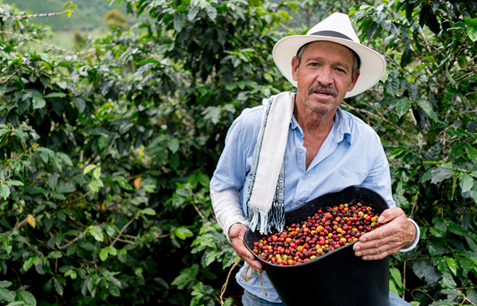
To listen to today’s reflection as a podcast, click here
Countless residents of planet Earth can’t imagine starting the day without a cup of coffee.
What most people have never suspected is that coffee was once a serious spiritual issue within the Catholic Church.
Around 600 years ago, a coffee craze swept the Middle East. Muslim mystics discovered that caffeine was an excellent way to stay awake for midnight prayers. Coffee became so essential in Turkey that a woman could actually divorce her husband if he didn’t provide sufficient beans.
When coffee finally arrived in Europe in the 1500’s, authorities expressed concern. Young men had begun to hang out at newfangled “coffee houses” – essentially the Starbucks of the late Middle Ages. Their conversations sometime veered toward radical ideas.
A number of Italian priests imagined coffee to be a Muslim plot – a hot, satanic brew that had been conjured up to poison the Church.
Enter Pope Clement VIII, who did something entirely sensible. In the year 1600, he drank a cup of coffee. “This Satan’s drink is so delicious,” he is reported to have said, “it would be a pity to let the infidels have exclusive use of it. We shall fool Satan by baptizing it.”
Coffee thus began a long and successful run as the West’s most popular morning beverage. Today it’s impossible to picture the average workplace or church fellowship hall without it.
About the same time, as Jesuit missionaries traversed South America, they imported more than just Catholic doctrines. They introduced coffee as a potential cash crop for farmers.
Within a century, two countries were duking it out for coffee supremacy: Brazil and Colombia. As Elena Caro reports in her book Beans of Destiny, these distinctly different cultures chose to go distinctly different ways when it came to supplying the world’s java.
Brazil opted for quantity. Before the nation abolished slavery in 1888 (the last Western country to do so), Black Africans toiled on huge coffee plantations. Success was measured by numbers. The picking of ripe coffee “cherries” was accomplished with the utmost speed.
Coffee farmers in Colombia, on the other hand, embraced a culture of quality.
Since the Colombian landscape is crisscrossed by the Andean highlands, there’s no room for huge plantations. Small family farms – each led by a cafetero, a proud, hard-working, independent coffee farmer – became the backbone of the nation’s economy.
That’s the enduring image of Colombian coffee.
It’s promoted worldwide by Juan Valdez, a fictional character who debuted in a whole-page ad in the Sunday edition of the New York Times on January 6, 1960. For the past 65 years, Juan and his trusty mule Conchita – whose saddlebags are always brimming with coffee beans – have let the world know that there’s nothing quite like Colombian coffee.
What’s so special about a cup of Colombian jo?
Instead of the industrial coffee “monoculture” of Brazil, Colombian coffee farms feature diversity. Regionalism of flavor is reinforced by geography, since different farms grow slightly different plants on different slopes. Every bean is selected by hand – an approach to harvest that fosters patience, precision, and pride.
Colombian coffee production is intimately linked to family and community solidarity. Social events, songs, and celebrations have become prime parts of national culture.
It didn’t have to be this way.
Colombian farmers could have opted for quick-win-crops like maize or plantains, which offer tangible results and a few coins in one’s pocket in a matter of months. Coffee is different. It takes four to five years to plant and nurture coffee plants – and there’s no guarantee that such time and effort will pay off. Caro observes that planting coffee is “to invest in a future that might not come.”
Why, then, did so many Colombian farmers become cafeteros?
Caro cites the teaching of the Jesuits. Back in the 1700s, they framed coffee farming as a moral discipline. It was like tending the soul, which requires diligence, patience, and never-ending care. Those lessons gradually became woven into the national character.
Colombian coffee represents a slow promise. There will be great results – if you just hang in there.
The same thing is true when it comes to following Jesus.
The apostle Paul even uses an agricultural motif to describe the promise of the slow-but-steady Christ-pursuing life:
“And let us not grow weary of doing good, for in due season we will reap, if we do not give up” (Galatians 6:9).
The best things in life – including eternal life – are worth waiting for.
To which coffee drinkers and disciples (often one and the same), will certainly raise their steaming cups and say, “I’ll drink to that.”
